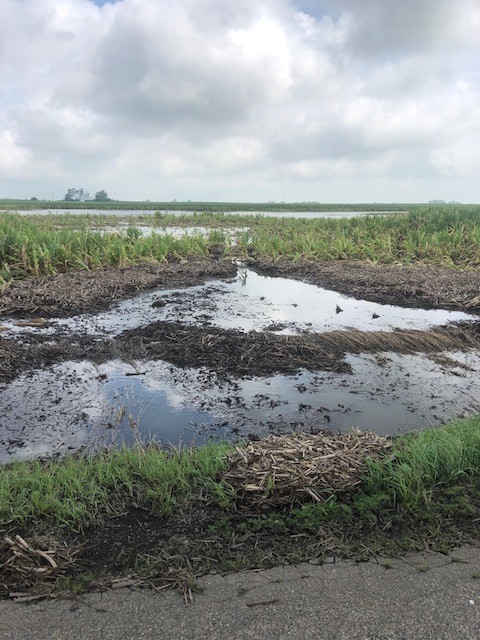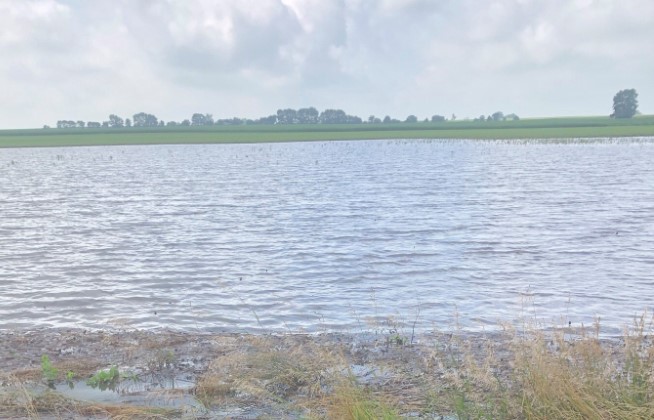Many parts of the Central Illinois region have been hit with multiple inches of rain, causing several ponding issues. One observation we can easily see is when there is water on the surface. What is harder to see, and to realize, is when a field is fully saturated, but not showing water on the surface. Here’s an example. I was walking a field in early July, and it was certainly wet enough to require me to throw on my muck boots. The field was showing symptoms of water damage, but no standing water was present. As I walked out into the field, my boots sunk in the mud, about up to my ankle. As soon as I took a step, I looked back and saw the hole my foot made in the soil and immediately saw water fill that void. That field did not have water standing on the surface, but it was just barely below the surface and was taking the place of any air space or void space that field had.

In the situation I mentioned above, this field was at field capacity for moisture. Unfortunately, many fields in my region are in the same situation and are showing many yellow, stunted plants. Why so much yellowing? Rain makes grain right? Well yes, to a point. However, heavy constant rains that do not allow fields to fully dry out or at least get below capacity, do not allow oxygen back into the soil. Roots need oxygen to thrive and to uptake nutrients as well as soil microorganisms that break down nutrients like phosphorus, making those nutrients more plant available.

Excess water and flooding can have obvious effects of nutrient loss from soil erosion, where valuable plant available nutrients and organic matter is removed from a field, or field area with water movement. Flooding can also have fewer visual effects when water soluble nutrients such as nitrate-nitrogen and potassium is leached past the rooting depth of the soybean. Nitrogen can also be converted to gaseous forms through denitrification and lost into the atmosphere more readily. N2 fixation is also depressed, and the soybean plant is unable to support the high nitrogen demand. Phosphorous can be made less available due to the decreased soil microbes populations being reduced. Manganese and iron deficiencies can also be exacerbated in saturated soils.
What does this mean for you and your operation?
Scott et al., 1989, performed a study showing that approximately 1.5 bu/ac per day is lost on silt loam soils and 2.3 bu/ac per day on clay soils when flooding occurred at the R1 (beginning bloom) growth stage. Supplemental nitrogen to flooded fields can reduce yield impacts (Bacanamwo and Purcell, 1999), but economics would need to be evaluated locally to determine if it will benefit your operation.


 and then
and then